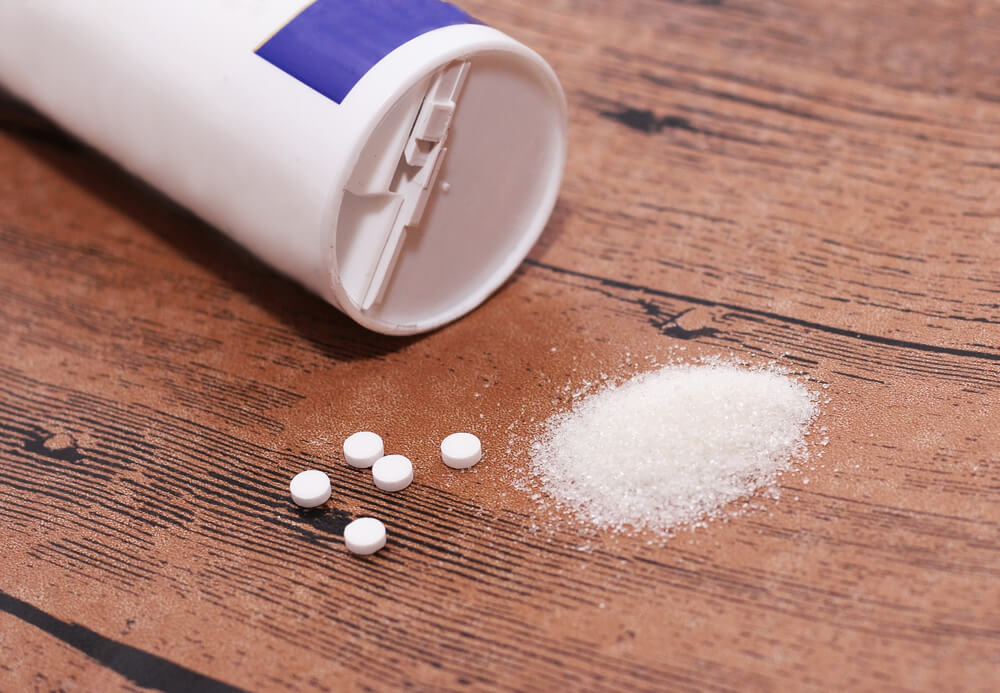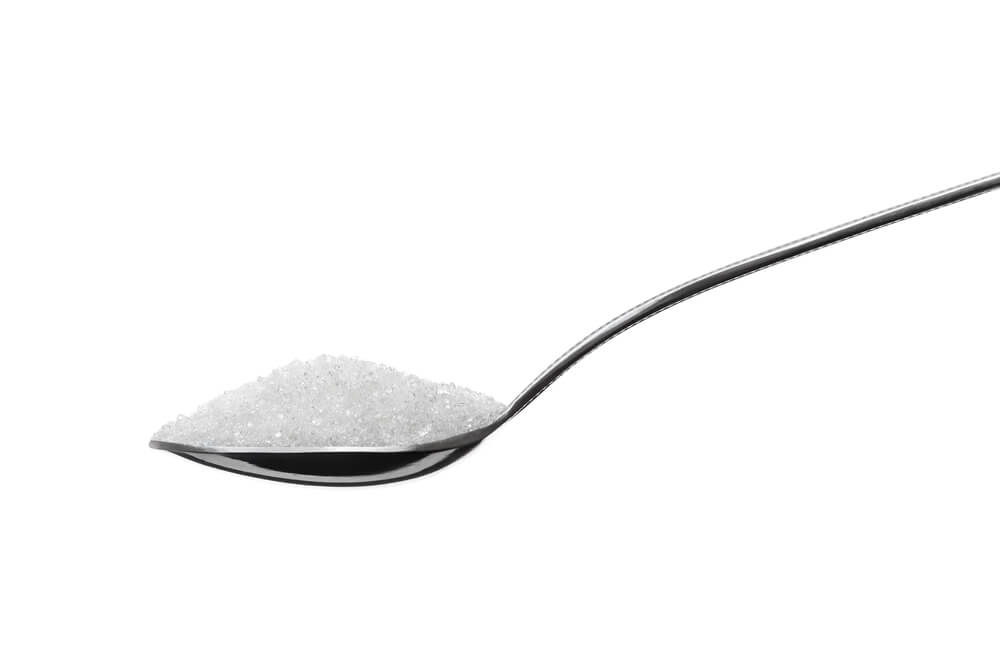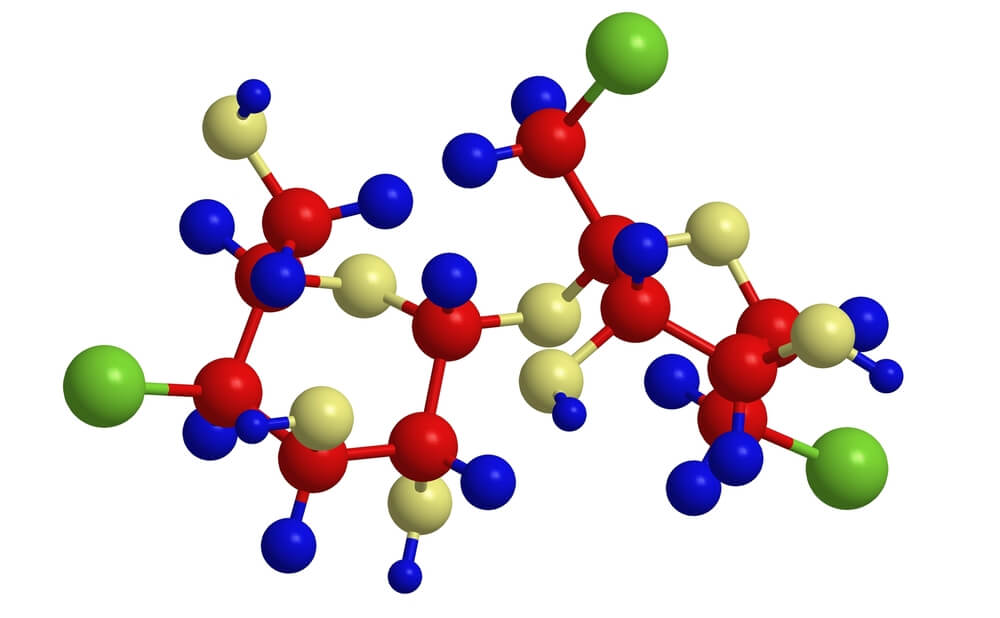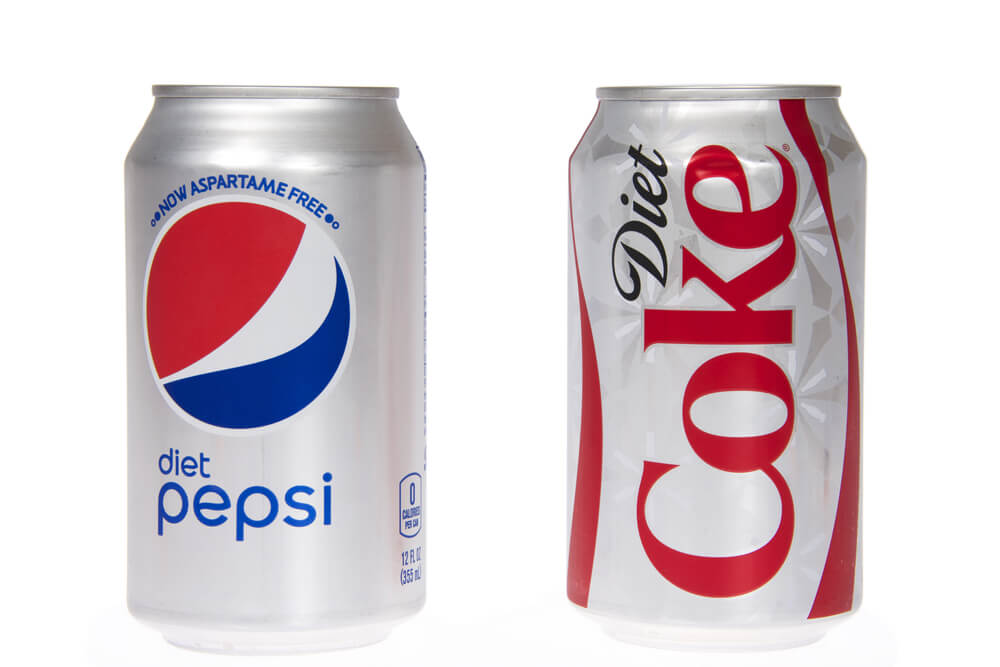Deep down, everyone has a bit of a sweet tooth. Now, you might not be someone who will chow down on an entire pint of ice cream or binge on bag after bag of sour candy at the movie theater, but there is just something satisfying about sweets. Today we will explore Sucralose…
It isn’t by accident nearly all protein powders come in flavors like vanilla and chocolate.
However, sugar added to food can lead to a host of health side effects, including diabetes, cardiovascular issues, not to mention cavities. To reduce calorie intake and possible health side effects from sugar, manufacturers have constantly looked for ways to offer sugar substitutes. Sucralose is one such artificial sweetener. Whenever dealing with a heavily manufactured food item, it is imperative for you to educate yourself on it.
You may just find the sugar substitute comes with more health side effects than sugar itself.
You Might Remember Me By Such Names As…
If you’re a child of the 1980’s and early 90’s, chances are you remember the Simpsons character Troy McClure, voiced by the late Phil Harvey, walking out onto camera somewhere and saying “Hi, I’m Troy McClure, you might remember me from such movies as…”. Sucralose is the Troy McClure of the artificial sweetener world.
It goes by nearly a dozen names as different manufacturers use varying names to separate it from others on the store shelf. The most commonly used name in reference to the sugar substitute is Splenda. Some other common brand names for the product are Nevella, Candys, Sukrana, SucraPlus and Curkren.
Another product, Canderel Yellow, is a sugar substitute with some Sucralose in it, but it is not 100%.
History of Sucralose
As is the case with most other artificial sweeteners, Sucralose’s history started in a lab. Researchers at Queen Elizabeth College came up with the compound in 1976 after they found it to be substantially sweeter than other sugar substitutes of the time. While at Queen Elizabeth College, the researchers worked for Tate & Lyle. The chemical compound and manufacturing process of Sucralose dates back to the same year. However, it did not truly pick up steam in the food world for several decades.
Tate & Lyle sold Sucralose throughout the UK, but it did not move out of the UK into major markets until its push into Canada in 1991 and Australia in 1993. The artificial sweetener finally came to the United States in 1998 and throughout the rest of Europe in 2004. In total, the product is now found throughout the world, spanning almost 90 countries.
What is the Difference in Artificial Sweeteners
There are many different kinds of sweeteners out there. Just sit down in a coffee shop and you’ll see a half dozen different sugar substitute options on the side of the table. Sucrose is a processed sugar, derived from beet sugar or sugarcane and dates back to the 1850’s. It is the most common form of “sugar” used in homes and is manufactured in a variety of ways, including traditional white sugar, brown sugar and others (the sugar does not naturally come bright white, it instead must be bleached first). The term “sucrose” itself comes from the French word for “sugar.”
While the drive for artificial sweeteners is often tied to a reduction in possible calorie intake, it often also comes down to just how sweet it is. In terms of pure sweetness, Sucralose is anywhere from 320 to 1,000 times sweeter. Aspartame (made popular by the brand name of NutraSweet) is one of the very first sugar substitutes, yet Sucralose is two times as sweet as the popular product (NHS, 2017).
How is Sucralose Made?
Have you ever sat with your cup of coffee at a restaurant, picked up a package of whatever the sugar substitute on the side of the table is, and wonder how it is made?
After all, it’s processed, so what actually goes into it?
It’s always a good idea to wonder how a particular food is made, but as artificial sweeteners have become second nature in many institutes, you wouldn’t be alone if you have never wondered this.
Sucralose, like many other sugar substitutes, is derived from a sugar. In this case, it starts out with sucrose. In a manufacturing lab, the chemical compound of sucrose is changed. Three hydroxyl group of atoms are removed and chlorine atoms are used in replace. Yes, chlorine atoms are the same used in cleaning the gym’s swimming pool, and in early chemical warfare before the introduction of mustard gas in World War I (funny how major chemical gasses are derived from items we consume on a daily basis).
What are the Advantages of Sucralose?
Beyond being up to 1,000 times sweeter than sucrose, there are other advantages of using the product. A bit of misleading information is the product is “calorie-free.” According to the FDA, it is, but according to your body, it isn’t.
What exactly does that mean?
Standing on its own, Sucralose doesn’t have any calories. When mixed with other products though (typically with moisture), the chemical compound can crawl out anywhere from two to four calories per teaspoon. This is still significantly less than traditional sugar, but four calories aren’t exactly zero (Medical News Today, 2017).
The thing about the Food and Drug Administration is it allows food products with less than five calories per serving to be labeled “no calories” or “zero calories.”
Essentially the FDA allows companies to lie to your face in order to increase sales. If you look on the back packaging of a bottle of diet Pepsi (we’re using Pepsi in this example because Pepsi uses Splenda in its diet products while Coke uses Aspartame) it will say “0 calories.” However, a 20oz bottle of Pepsi has about 2.5 servings in it.
While 10 calories per bottle isn’t that big of a deal, if you’re someone who consumes three or so bottles a day (if you are, you may want to move towards other beverages, simply for extended health reasons), that’s 30 extra calories a day, or 210 extra calories a week. At the end of four months, you will gain a full pound of weight and after a year, you’ll gain three pounds, from the calories found in “zero calorie” soft drinks.
Beyond the FDA’s leniency regarding the mislabeling of food, there are some health benefits to using Sucralose.
Due to the drastic reduction in calories, the sugar substitute does not cause the kind of cavities regular sugar does. For anyone with sensitive teeth, this becomes a viable option. It is also a safe sugar substitute if you suffer from diabetes and need to stay on top of sugar and carb consumption (it doesn’t have any influence of insulin levels) (Medical News Today).
Sucralose is also one of the few sugar substitutes that remain stable even under high heat. If you’ve ever tried to whip up a cake or a batch of cookies with an artificial sweetener, you know just how much of a disaster that can turn out to. The replacement sugar doesn’t hold its chemical form, causing terrible flavor distribution and likely resulting in that batch of cookies ending up in the trash.
As Sucralose does remain stable in high temperatures, it is one of the best artificial sweeteners for cooking.
However, if you are considering to use it for cooking, make sure to purchase the granulated form. This gives it the same consistency as regular sugar.
Otherwise, you’ll end up putting far too much into your baked good, resulting in an overly sweet and non-edible food item. Just keep in mind Sucralose does absorb more moisture than regular sugar (it is why if you purchase a bag of Splenda at the store it is extremely light and fluffy). As it absorbs moisture, your baked goods will be a bit dryer to the taste, so it may take a bit of experimentation with liquid additions before you find the perfect ratio for cooking.
How Sucralose Can Affect Your Health
Realistically, the sugar substitute has very little health impact on your body. If you have a sweet tooth, this, in turn, becomes a favorable impact on your body as you can remove some of the sugars you consume.
Since the product’s creation back in the 1970’s, there have been dozens of studies performed on Sucralose, ranging from tests conducted by the FDA and the Health Production Branch of Health and Welfare to the Canadian Diabetes Association and the Committee on Food from the European Union.
All studies determined Sucralose to be non-toxic, non-cancer causing and with no ill effects on the human body.
When consuming Sucralose, very little of the product actually ends up in the bloodstream.
The vast majority of Sucralose just takes a bit of a ride through the digestive tract and is forced out. Depending on what is consumed with Sucralose and your own body, a range of 11 to 27 percent of Sucralose is actually absorbed into the body. The other 73 to 19 percent is pushed out. Now, of the amount absorbed by your body, much is filtered out by the kidneys, with only 20 to 30 percent of the absorbed amount turned into metabolic energy.
This means anywhere from two to eight percent of Sucralose actually ends up in the bloodstream in the form of energy (NHS, 2017).
Now, while the artificial sweetener is generally seen as a healthy alternative to sugar, you shouldn’t start dousing everything you eat in the product just yet. Some studies indicate consumption of between 100 to 1,000 milligrams per kilogram of bodyweight can cause an increase in the PH levels of the intestinal tract, which may lead to body weight increase.
Now, this research should be taken with a grain of salt as it was funded by the Sugar Association, which naturally wants individuals such as yourself to purchase sugar, not a sugar substitute. The findings from the research are plausible, however, so as is the case with just about any other food additive, you need to consume responsibly and in moderation.
What Companies Use Splenda
Due to the generally good research on Splenda and other Sucralose branded sweeteners, many companies have shifted away from Aspartame for diet and low-calorie offerings.
Most products do contain the Splenda logo on it, but some have moved away from in order to keep the packaging clean. Pepsi has switched to Splenda for all of its diet beverages. So has the Arizona Iced Tea company. Splenda is in more than just beverages though. Orville Redenbacher, the popcorn company, uses it in its microwave kettle corn bags.
Worldwide Sports Nutrition uses it in many of its meal replacement protein products (the same is true with PTS Labs, PowerBar, ProLab and Protein Revolution). Trident Sugarless Gum uses Splenda, as have many other companies out there (My Green World, 2014).
Conclusion
There is something about sugar no other food item can do. Ideally, you should consume all of your sugar naturally from fruits and vegetables.
However, many baked goods you purchase now contain some sort of sugar, tomato sauce may prove beneficial with a little touch of sugar (to reduce the tomato acidity) and even that extra scoop of ice cream after a workout can be incredible. The traditional form of sugar contains a high level of calories, which can attack everything from your waistline to your teeth.
The drive to replace sugar with an artificial sweetener is nothing new. It has been around for hundreds of years. Some sugar replacements have links to undesirable health conditions, including cancer. In its over 40 years of existence, very little suggests there are negative attributes to Sucralose, despite a single study conducted by a sugar association.
So, if you want to indulge in some sweets from time to time, feel free to use this kind of sugar sweetener. While you should always consume in moderation, if you need to eat something sweet, few other options come with the same health benefits.
-Terry Asher
Terry Asher
Latest posts by Terry Asher (see all)
- Better Family – Product Review Liquid Daily 2 oz - Dec 16, 2024
- Post-Workout Recovery: The Key to Optimal Performance - Nov 25, 2024
- Pre-Workout Supplements – Everything You Need To Know - Nov 18, 2024














[…] post Sucralose – Everything You Need To know appeared first on Gym […]
[…] added sweetness) include brown sugar, corn syrup, corn sweetener, maltose, malt syrup, fructose, sucralose, glucose, honey, sucrose, and trehalose (there are others but these are the most commonly […]
[…] you’ve been looking at proteins and have noticed that most have some kind of sweetener element. This is done to help, well, make the protein powder taste like, well, […]
[…] you’ve been looking at proteins and have noticed that most have some kind of sweetener element. This is done to help, well, make the protein powder taste like, well, […]
[…] you’ve been looking at proteins and have noticed that most have some kind of sweetener element. This is done to help, well, make the protein powder taste like, well, […]
The supply of substances to the body needs to be carefully considered.